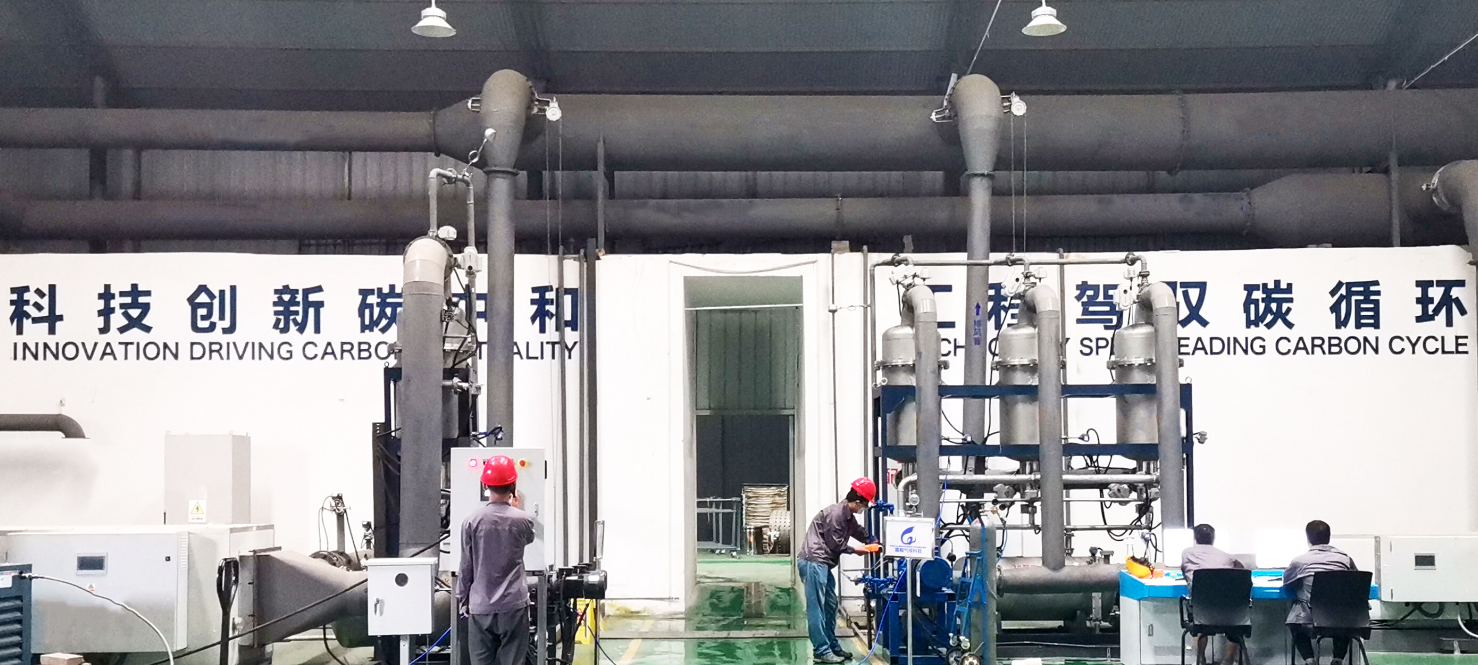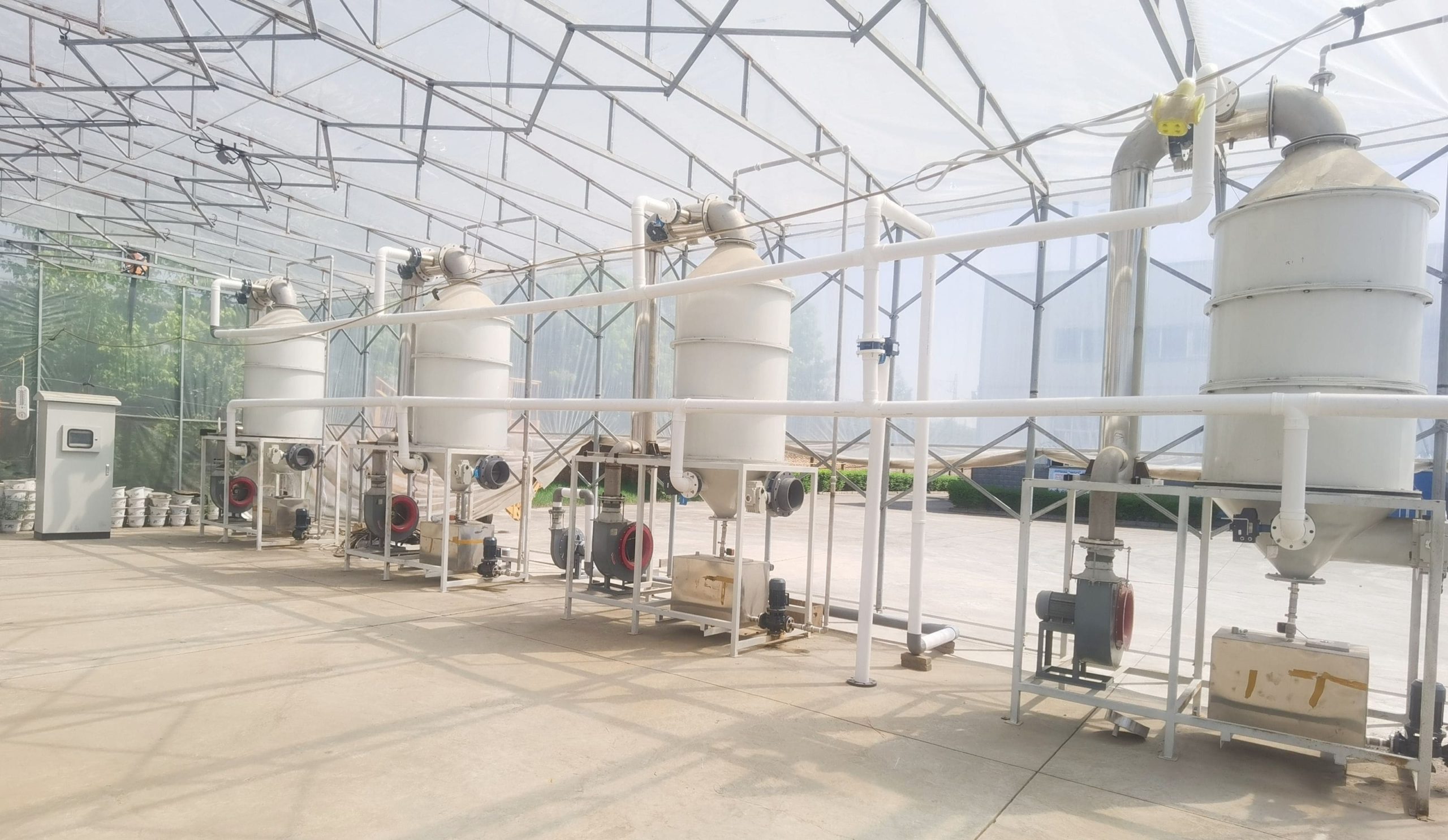Carbon capture, utilization, and storage (CCUS) solutions stand as pivotal tools on the path to carbon neutrality. The challenge, however, lies in bridging the gap between the stages of carbon capture and utilization—a disparity that hampers the efficacy of these solutions.
Zhou Fu, CEO of Linhe Climate Science & Technology, identifies this gap as a result of the struggle to seamlessly integrate large-scale carbon capture and utilization processes. Linhe, established in 2021 and headquartered in Beijing, is a company that develops scalable, end-to-end decentralized CCUS solutions.
Carbon capture, a capital-intensive endeavor, requires significant land use as it usually targets large, centralized carbon emission sources that are often far from carbon utilization sites. This drives up logistical expenses and poses transportation challenges. Moreover, conventional carbon capture solutions tend to only generate high-concentration carbon dioxide, which may not be suitable for downstream utilization, exacerbating the supply-demand gap and resource wastage.
At present, utilization of carbon dioxide remains largely limited to carbon sequestration, which is the process of capturing and storing atmospheric carbon dioxide. A lack of use cases and weak market demand will curtail the utilization volume of carbon dioxide, stretching the supply-demand gap. Linhe proposes a novel approach—termed “U determines C”—that hinges on letting downstream utilization cases determine the carbon capture methods and business models used. This approach aligns decentralized carbon capture with various carbon utilization methods, introducing a new dynamic to the CCUS landscape.
According to Zhou, carbon utilization stands as the primary sector capable of driving market demand. The heart of devising replicable and scalable CCUS systems lies in matching carbon capture solutions with the demand profiles of utilization scenarios. If utilization paths are decentralized, then the capture methods should mirror this decentralized approach.
Linhe’s innovation culminates in two carbon capture systems: a wet and dry direct air capture (DAC) system and a modular flue gas capture system. The DAC system, despite its challenges, has been regarded as a practical method for carbon reduction. Linhe’s unique industrial-scale DAC system leverages a proprietary material, enabling carbon capture through humidity-induced adsorption and desorption. This approach allows carbon dioxide to be captured at varying concentration levels by harnessing the inherent properties of atmospheric air.
Zhou underscores that traditional DAC technology has underutilized atmospheric properties. Linhe’s DAC technology harnesses the atmosphere’s natural circulation and diffusion attributes, overcoming thermodynamic obstacles inherent in conventional methods. This breakthrough yields decentralized, on-demand carbon capture, while also enhancing the cost-effectiveness of DAC. Linhe’s goal is to scale up its DAC system to become the world’s most cost-efficient air-based carbon capture solution, thereby amplifying carbon dioxide utilization pathways.

Flue gas, a gas that is produced as a byproduct of combustion processes in industrial and energy-related applications, often contains pollutants or harmful substances. Hence, it is usually treated or processed before being released into the atmosphere. Flue gas typically contains a variety of components including carbon dioxide, nitrogen, and others.
Linhe’s modular flue gas capture system—a widely adopted technique in China—thrives in small spaces. According to 36Kr, this proprietary system has been deployed across onshore oil fields, offshore rigs, and ships, demonstrating ease of installation and transportability. It boasts absorption efficiency of 85–95%, potentially reducing equipment load by 30–90% and cutting operating costs and energy consumption by approximately 10%.
Linhe’s utilization endeavors center on solid waste disposal, enhanced oil recovery, and carbon-rich agriculture. In the realm of solid waste disposal, Linhe enters the construction materials market at the disposal stage, processing diverse waste types using its reduction and utilization technology. This process yields valuable by-products like carbon aggregate, carbon-infused construction materials, and carbon-rich concrete slurry, primed for capture upon mineralization for subsequent utilization.
Linhe has also created a carbon fertilizer machine that can concentrate air-captured carbon dioxide for greenhouse utilization. This solution boosts the photosynthetic rates of crops by around 25%. In addition, data obtained from a proof-of-concept conducted in collaboration with Chinese photovoltaics company Trina Solar and the Shunyi Institute of Agricultural Sciences Base also indicated that the system boosted tomato and melon yields by 30–40%. This suggests the potential of the technology as a cost-effective and sustainable method for improving crop yields.

In time, CCUS and DAC technologies, pivotal in curbing carbon emissions, may soon intertwine with other initiatives like carbon pricing and trading, ushering in diverse business models and fostering a multifaceted approach to sustainability.
KrASIA Connection features translated and adapted content that was originally published by 36Kr. This article was written by Lv Yaning for 36Kr.

